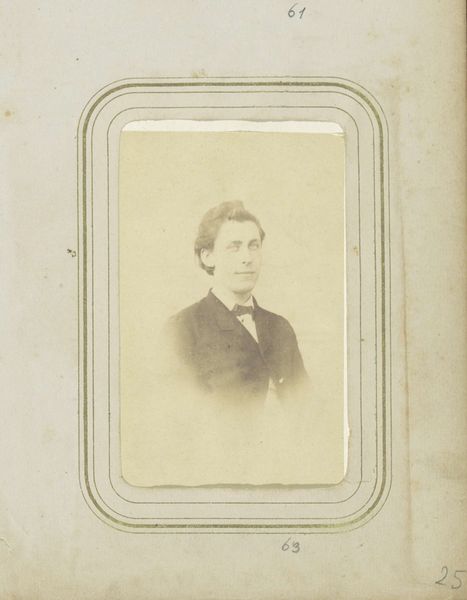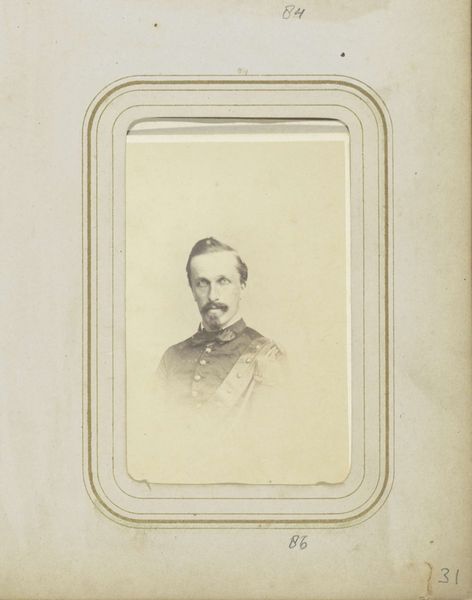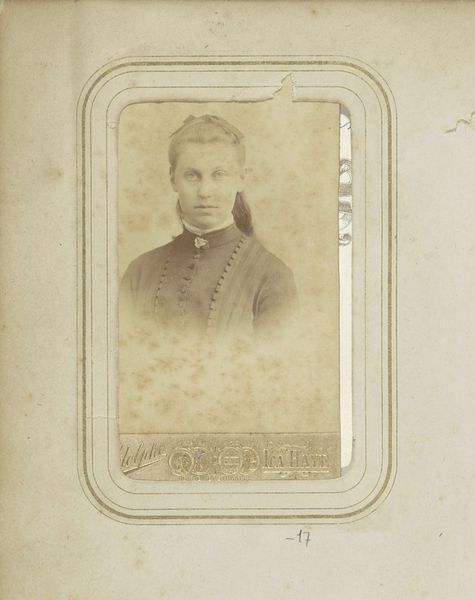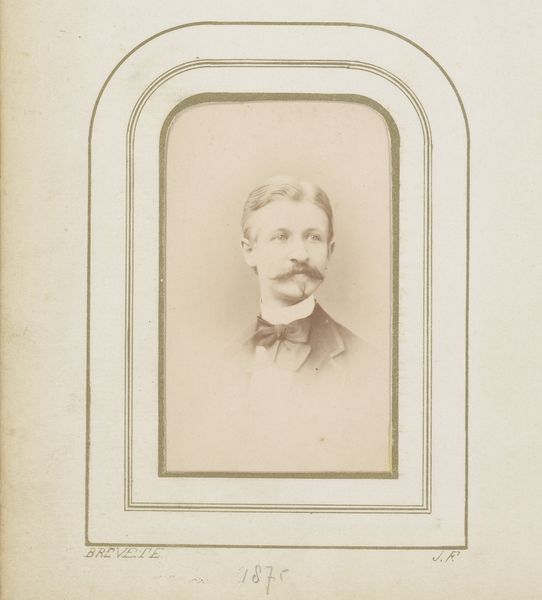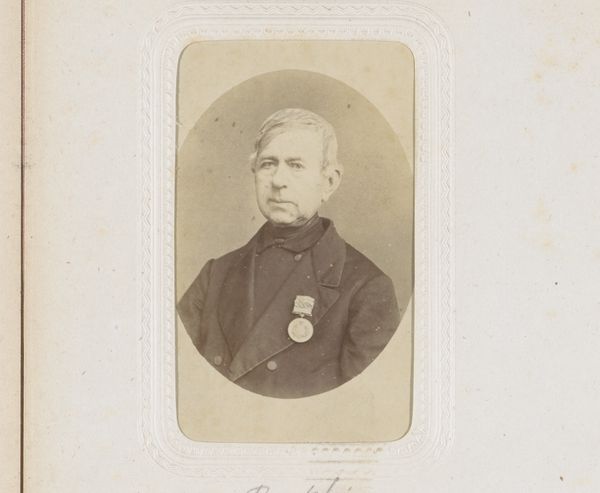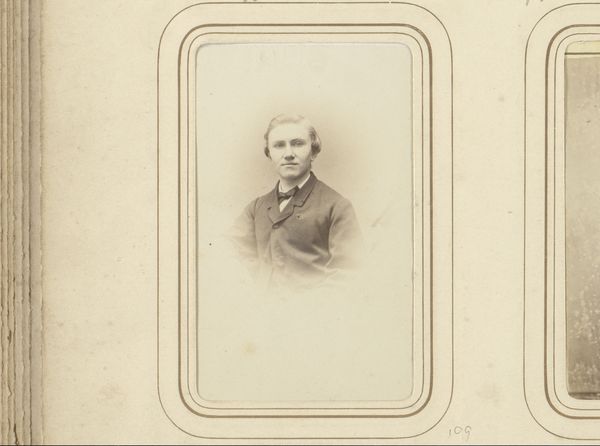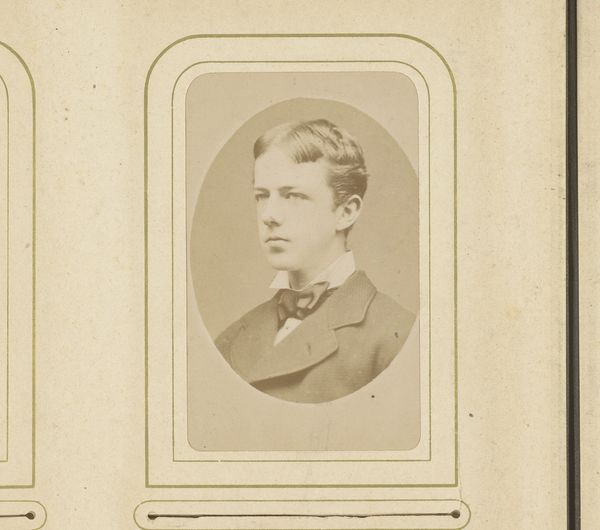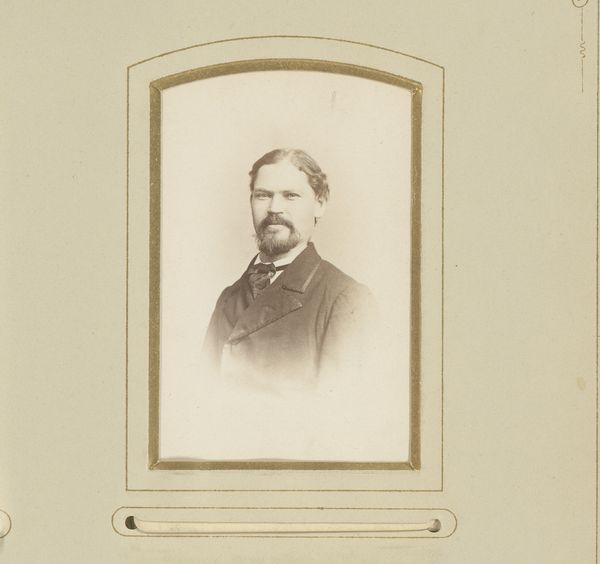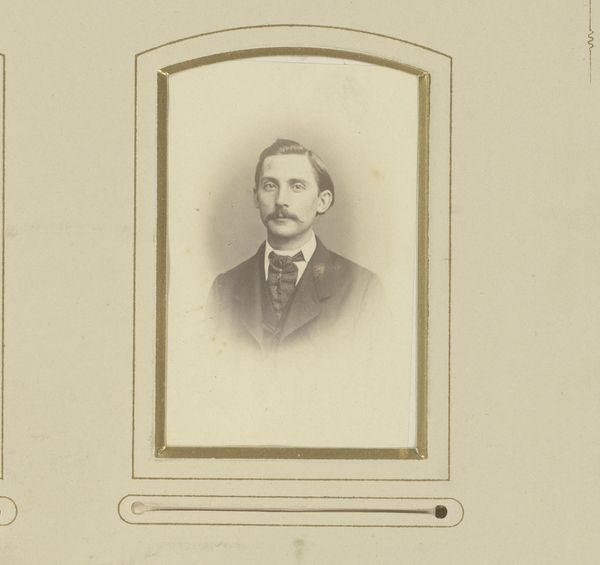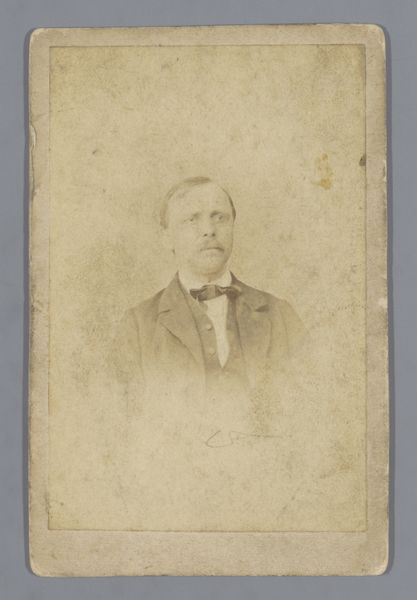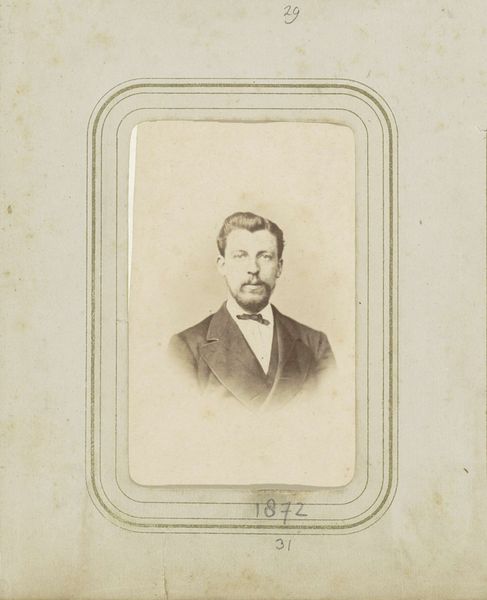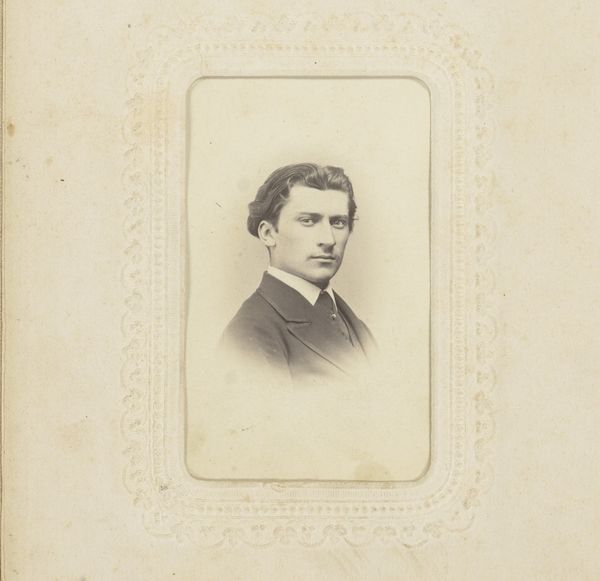
Portret van een man met een strik en een uniformjas c. 1860 - 1870
0:00
0:00
daguerreotype, photography
#
portrait
#
daguerreotype
#
photography
#
realism
Dimensions: height 93 mm, width 58 mm, height 104 mm, width 62 mm
Copyright: Rijks Museum: Open Domain
Curator: Take a moment with “Portret van een man met een strik en een uniformjas,” or “Portrait of a Man with a Bow and a Uniform Jacket,” a daguerreotype made sometime between 1860 and 1870. Editor: My first thought? Stark formality. The monochrome and pose give it a solemn weight. He seems trapped in amber. Curator: Yes, the daguerreotype process lends a remarkable clarity, but it was also incredibly labor intensive. Each plate had to be meticulously prepared and exposed, making portraiture a fairly exclusive commodity. What does his uniform suggest to you about his role in society? Editor: Immediately I see power and constraint, the tailoring emphasizing a stiff posture. Consider the buttons— functional, but primarily ornamental. This uniform, almost a gilded cage, speaks to the rigid class structure and military ambitions of the period. But the photograph also immortalizes it, preserving for scrutiny an emblem of a particular moment. Curator: Precisely. Daguerreotypes were not just images; they were tangible objects of status, of remembrance, reflecting and reinforcing social hierarchies. This is very early photography and it speaks volumes about representation in that moment of material experimentation. Consider how those consuming images were viewing photography for the first time. The cultural impact alone is amazing! Editor: Indeed. But look closely at his expression – a flicker of uncertainty in his eyes, a slight asymmetry to his lips. It disrupts the imposed rigidity of the medium, giving it an emotive quality that cuts across time. Photography and art are, for this moment, linked in a profound act of production. This reminds me of Barthes's "punctum"… a visual disruption that pulls the viewer in. Curator: It's true, and it also serves as a reminder of labor. Not only in creating the image, but the conditions of life under a monarchical regime and perhaps serving an army with imperialistic ambitions. But this work encapsulates more than one life, too. We should also remember all of those who assisted with labor. Editor: In considering his "role," the artist’s deliberate use of the camera’s potential creates tension. It gives the photograph a contemporary feel. What would normally look antique begins to reflect, to refract its qualities outward. Curator: So, we started with the object and perhaps ended with its subject’s inner world. Amazing. Editor: That tension between representation and interiority still captivates today.
Comments
No comments
Be the first to comment and join the conversation on the ultimate creative platform.
